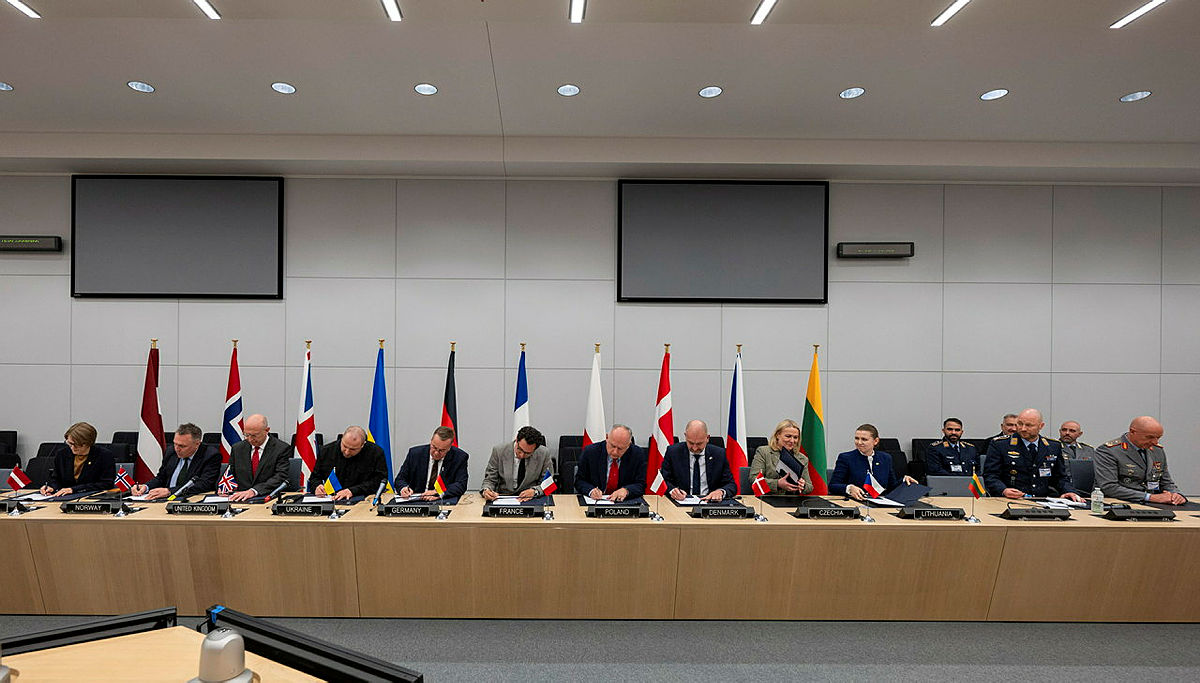Europe’s NATO members can gain an operational advantage by reframing close-combat training. However, with the current Combatives models, this change would add burden to both time-in-training and financial resources. Seizing this opportunity would require replacing the current technique/MMA-based models with a leaner model. To this end, alternative options offer increased functional expertise and substantial reductions in time and cost allocations.
To demonstrate this, we can use “time-in-training” to compare costs-and-time allotments against the achieved level of functional expertise.
The technique-based models:
For this comparison, the U.S. Army’s current MMA-based Combatives training-model is a well-documented program. Here, 40-hours of training produces a “questionable” level-1 proficiency. An additional 80-hours produces a Level 2 proficiency. A combined total of 440-hours achieves the top level-4 proficiency. However, the average U.S. soldier only holds a level-1 or level-2 rating.
The statement of “questionable” proficiency is founded in the comparison of four scientific points;
1. Developing functional expertise: Functional expertise in MMA techniques require extensive repetition.
2500 to 3000 repetitions of technique are required to create the most basic mental-map (muscle-memory). This requirement increases with complexity. MMA techniques are complex. For example – Level 1 has a minimum of 8 phases, each with multiple individual techniques. Achieving basic functionality in any one phase equals 2500 times the number of techniques it contains.
- Situational Awareness and Avoidance
- Stress Management and Decision Making
- Dominant Body Positions, range & range transitions, and body control, (a key principle)
- Basic striking and defensive techniques
- Grappling, throws, takedowns, clinch, chokes, and knee defense
- Introductory rifle/knife based Combatives
- Techniques for creating distance and disengaging from an opponent
- Realistic Training and Application
2. Retention of functional expertise: Retention of functional expertise in complex techniques is low.
Retention of a complex movements (effective expertise) depends on repetitions and the time since last practiced. The factors listed below negatively affect retention.
- How natural the movement is – Generally MMA techniques are not natural movements.
- The complexity of the movement – Generally MMA techniques are complex.
- The frequency between initial-training and recurrent training – MMA requires high frequencies.
3. The deterioration of fine movement under stress: MMA methods include fine-motor techniques.
High psychological/physiological stresses cause fine-motor deterioration. Deterioration begins at 145 heart-rate (BPM). The more complex a movement is, the more it deteriorates.
4. Somatic-markers: Somatic-markers determine access to mental-maps (techniques).
“Somatic-markers” store, sort, and select physical movement. Somatic-markers use rapid-sorting to determine selection. The most practised mental-maps are the quickest; lesser used maps are slower.
As counter-point, I am well versed in W.E. Fairbairn’s “Gutter Fighting”, so I will speak from that as an alternate option. In comparison with the MMA model, Gutter Fighting’s battle-proven model achieves a higher-than-average functionality in less than 40- hours.
Completing the U.S.’s level-1 and 2 models will require 120-hours; completing the Gutter Fighting model will require 40-hours. 80-hours is a massive time/cost reduction. These savings will repeat every time the program is run. These are time/cost saving that can be reallocated to greater advantage elsewhere. Conversely, the MMA model repeats their double-rate-loss every time its program is run.
The Gutter Fighting Variant:
1. Developing functional expertise: Principle-based, Gutter Fighting is very natural.
Training installs a small toolbox of techniques that personally fit the user. This natural ease-of-execution accelerates efficiency, effectivity, and development of functional expertise.
2. Retention of functional expertise: Gutter Fighting is quicker easier to learn, easier to retain:
This is due to a smaller toolbox of less complicated movements and faster learning curve. This translates to faster learning, higher retention rates and longer durations between initial-training and recurrent training.
3. Deterioration of fine movement under stress: Gutter Fighting is gross-motor.
Gutter Fighting uses gross-motor skills which exhibit substantially lower deterioration rates under stress.
4. Somatic-markers: Gutter Fighting methods are non-complex.
The Gutter Fighting toolbox is smaller, simpler, and easier to maintain. Its smaller highly adaptable repertoire increases accessibility and recalls in the somatic-marker filing system, thus providing more available techniques.
One major advantage is that these factors contribute to a greater level of self-generated self-confidence and self-reliance. These they are invaluable qualities and they affect personal morale. As such these are the foundation of a greater will to act. By measurement alone, these effects would constitute a major step towards a more capable training model.
To further understand the difference between the MMA model and Gutter Fighting, the latter focuses on mindset. The MMA approach emphasises a technique-based program while the Gutter Fighting variant addresses altering and arming the mindset. The variant is characterised by an extreme emphasis on Cognitive-reframing, Principle-based instruction, and a small extremely versatile toolbox of techniques to craft a holistic and adaptive combatant.
Cognitive-reframing is the mechanism that enables trainees to reevaluate and reform their culture-based belief systems. Culture is the key-stone. It is what we weigh our self-worth against. Psychologically, culture drives self-perception and self-perception drives capability and motivation. Capability and motivation drive the willingness to act.
Cognitive-reframing is known to Tier 1 and Sniper training. Using it at basic level to alter perceptions of fear, adjust aggression levels, and enhance rightfulness-of-action is equally functional. Incorporated into training it works to produce the self-confident will-to-act psychological state critical to its successful execution. While reinforcing the mental gains of Cognitive-reframing, Principle-based instruction teaches an alternate approach to technique. These factors increase self-reliance and reduce the trainee’s perceived need of a large repertoire of specific, often single purpose, techniques.
Implementation: An overview of Syllabus
The training syllabus starts with Cognitive-reframing, merges into a rapid in-depth anatomical introduction of the human body, and then merging into Principle-based physical training.
With mindset constructed as the foundation. Principle-based physical training begins with basic boxing footwork, a few basic throws to develop an understanding of balance and leverage, five basic joint locks, and a few highly versatile methods of striking. Throughout this process, weapons of any kind can be readily incorporated to integrate rapid transitions for one to the other.
Cognitive-reframing/Anatomical Instruction:
Before introducing practical technique, anatomical knowledge is critical. Here Cognitive-reframing again plays a role. The anatomy focus illuminates specific functions and factors related to a very short list of extremely high gain targets. This detailed knowledge of achievable targeting reinforces Cognitive-reframing by further embedding a self-perceived can-do mindset.
In close-combat, cognitive-reframing reduces self-restraint and hesitation. Reinforce a self-perceived proof of human psychology, physiology, and biomechanics, and you develop a self-generated subconscious trust in one’s own ability. This is the mechanics of reframing the trainee’s psychological sub-frame. Be it an opponent or an objective, self-ingrained trust in one’s own ability reduces the perception of risk and increases bravery.
Principle-based instruction:
Learning specific techniques instils confidence but limits flexibility. Learning principles embed Rapid-recall improvisation. This unorthodox approach cultivates a versatility characterised by rapid-response, “out-of-the-box” thinking.
Contrary to common belief, mastering a long list of situationally specific techniques is not optimal. To illustrate this, I refer to the pressuring or breaking of fingers, elbows, and knees. A combatant needs only to recognise that these are hinge joints and that forcing them past their natural limits of motion will cause injury. A simple recognition of opportunity can provide the how. Intention will drive the degree of force and determine the outcome; be it control or dislocation.
Under this one hinge-joint principle, trainees have learned a highly adaptable approach to manipulating an opponent’s fingers, elbows, and knees. Add the principle of joint-rotation, and they can manipulate ball & sockets joints. Cap these off with the principles of balance and movement and locks turn into throws and come-alongs. Introduce combining principles and the trainee’s knowledge now encompasses a spectrum of manipulations and technical options.
Direct and Associated Benefits: These methods of instruction produce;
- Deeper self-confidence and a notable increase in self-reliance
- Increased willingness to risk supports an increased willingness-to-act
- Improved cognitive flexibility, adaptability, and improvisation
- Rapid assimilation of functional skills, faster achievement of expertise
- Greater retention of expertise and a reduced need for refresher training
Conclusion
Experiencing self-determined proof is an important psychological contributor in subconsciously reframing a trainee’s perception of self and ability. This is evidenced in demonstrations of proactive attitude and controlled intention. Cognitive-reframing strengthens a combatant’s resilience and resolve in overcoming challenges presented by high-pressure environments.
This cognitive/principle-based approach represents a significant divergence from traditional training. It intentionally arming the mind, and reduces limitations. A state of “mental and emotional stability” is a fostered. Regardless of physical attributes, a soldier who adapts swiftly and innovates rapidly in high-stress situations carries a significant advantage.
This interactive relationship between mental-state and method creates a reciprocal state of self-betterment. Qualities that strengthen people, promote a willingness to engage a wider range of challenges. In high-pressure environments willingness to engage is crucial. This cultivates inter-personnel collaboration and team synergy. The larger effect is higher operational efficiencies and improved morale in both military duty and personal life.
To arguments regarding policing, house clearing, snatch & grab operations, (etc.) as “modern warfare” operations, I note that the Fairbairn model retains a base capability for these mission specific skills as well as information-gathering and crowd control. This comprehensive foundation rapid aids transitions to the armed or unarmed methods associated alternate mission frames.
We must recognise that with NATO’s current pre-war footing, administration and cost burdens are crucial. Reductions in time, improved skill objectives, and increased skill retention need to be streamlined and supported by a lean approach. Situational or physical, individuals need to be trained in this manner so they can innovate quickly and creatively in the arena of high stress and force-on-force conflicts. Consequently, they need support in personnel rotations and reassignments. By reducing these burdens, a Cognitive-reframing and Principle-based training program offers significant combat and non-combative advantages. The alternate training methods detailed herein will increase deployment-ready personnel and more.
Barry Drennan
Barry Drennan is the founder and head instructor of Fairbairn Protocol. With over 43 years of experience in Kyukushinkai karate, Krav Maga, Daito ryu Jujitsu, and boxing, Barry has dedicated over 16 years specialising in the instruction of William E. Fairbairn's Gutter Fighting methods. He has extensive knowledge related to the instruction and execution of combat disciplines. Barry Drennan emphasises functional combat training. His commitment to the field is demonstrated in his instruction and through his authorship of two books that contribute to advance the understanding and techniques of close-combat.


